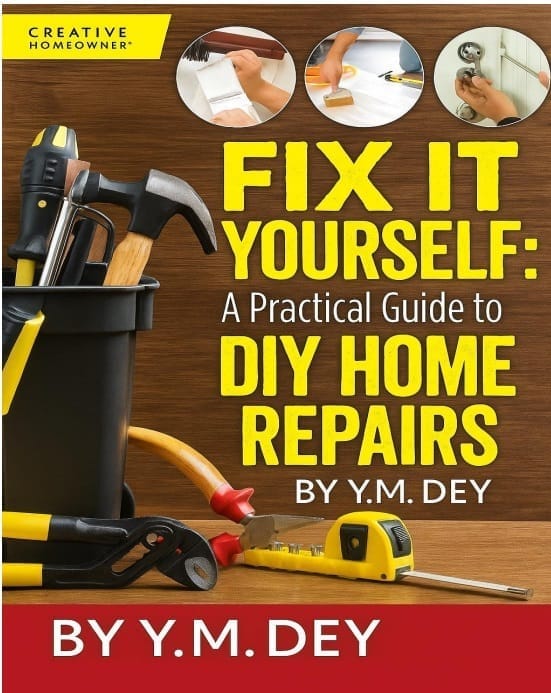Understanding Floor Construction & Home Water Systems
If you’ve ever stood in a room and thought, “This floor could really use an upgrade,” or “Where on earth does my hot water come” from?”—you’re not alone. When we think about home maintenance, it's easy to focus on the visible stuff like paint colors or furniture, but what’s under our feet—and behind our walls—matters just as much.
The type of flooring you have can change how your home feels, how warm it stays, and how much upkeep it needs. And then there’s your water system, quietly doing its job every day—bringing hot water to your taps, keeping your radiators warm, and making life a lot more comfortable.
In this post, we’re breaking things down in a simple, no-jargon way. From the different kinds of floors you might find in old versus new homes to the basics of how your water system works, we’ll help you get to know the parts of your home that don’t always get the spotlight—but definitely deserve it.
Understanding Floor Construction
The construction of your floors will depend on the age and style of your property. If you are in an older property, your floors are likely to be wood floorboards on top of a timber frame structure. In newer properties, however, the floors may well be concrete. Whatever your subflooring, you have many floor covering options available to you. When making a choice about flooring, budget is probably one of the largest considerations; any of these flooring options can range from cheap to very, very expensive.
Carpet Options
Carpet is nice and warm underfoot and keeps the heat in but can look tired and jaded if not maintained properly. As well as wool and synthetic carpets, there are lovely designs made from grass. Grass grows fast and is happy being harvested, thereby making it a sustainable choice.
Sea grass grows in tropical climates on the banks of rivers. The natural fiber is harvested by hand, dried, and hand-spun into cords before being woven into flooring.
Wood Flooring Choices
Traditional floorboards look beautiful and are nice to restore as an original feature; however, they can be drafty in an old house.
Solid wood floors can be laid over any leveled floor and can really change the look of the room. There is lots of choice and price range, too.
Engineered floors involve a surface of real wood veneer being applied to an interior of softwood plywood (ply). Bamboo is also available as a composite flooring alternative, a fast-growing resource with a variety of finishes.
Laminate and Bamboo
Laminate floors have a surface that is a photograph of wood printed onto a thin MDF board. It is easy to damage and impossible to repair. This option is fairly cheap, but the style is rather dated now.
Bamboo flooring is one of the hardest natural materials available. Because bamboo is a rapid-growing grass and not a wood, it can be harvested every 3–5 years, unlike 15–25 years for most wood. This makes bamboo a very environmentally friendly product for flooring.
Tile and Vinyl Options
Ceramic tiles are easy to clean but can be cold unless you install underfloor heating; these are best used in wet areas (kitchens, bathrooms, and conservatories) but can be used anywhere.
Vinyl floors are not as cheap and nasty as you might think; some really funky colors and options are available these days. Get a good-quality type—it will last a long time and won’t look cheap.
Plastic, Marmoleum, and Rubber
Plastic tiles come in a wide range of styles, and some are more expensive than wood. Durable (hard-wearing) and luxurious, plastic tiles will last for many years.
Marmoleum is a revival of the old linoleum. Eco-friendly since it is made from resin and linseed oil with a jute backing, it is also good for allergy sufferers as it doesn’t “off-gas” (give off nasty toxic fumes). Available as tiles and rolls of solid flooring.
Rubber can look industrial but comes in some very funky colors and interesting textural designs; it really suits a small bathroom or kitchen.
THE WATER SYSTEM
How Water Enters the Home
The water will enter a domestic property through a main water pipe; this is then routed through to the hot water and heating system (if you have a water-based heating system). Most domestic plumbing systems consist of a furnace (boiler) that heats that water; this can then be stored in a hot water storage tank or routed to water-filled radiators and baseboard pipes that heat the home.
Types of Heating Systems
It is also possible to have a furnace that heats the water as it is being used; in this scenario you would not need a hot water storage tank. Another likely scenario is a water heater that heats the water and then stores it until it’s being used.
Importance of Understanding Your System
Suffice to say that heating and hot water systems can be complex to understand. Yet they are important to get to know because when they go wrong, they can go really wrong. So I would suggest when you first move into a property, you should invest in an hour or so of a plumber’s time to give you a guided tour of how your individual heating and hot water system works so you know what to look out for when things go wrong, and you know how to maintain it.
Whether you're dreaming of warm wooden floors or figuring out if your boiler has a name (kidding... sort of), understanding the basics helps you make better choices and feel more in control of your space. You don’t need to be an expert—you just need to know enough to ask the right questions and call in help when needed.
So take a moment to look down and maybe even poke around in your utility closet. The more you learn about your home, the more confident and connected you'll feel living in it.
Related Articles
But as I explored the world of DIY, I realized most online resources were either too advanced or too expensive or assumed the reader had years of experience and a fully equipped workshop. That gap inspired the launch of Gear For DIYers—a practical, beginner-friendly resource tailored to everyday homeowners and renters looking to build skills and confidence, one project at a time. Click here for more info
Grab Our Curated Personalized Gift Guide—100% FREE
If you’ve ever paid for simple home repairs or waited weeks for a handyman, you’re not alone. That’s why I created this free guide with practical, step-by-step instructions for fixing common issues around the house — from leaky faucets to squeaky doors and more!
Say goodbye to costly service calls and hello to confident DIY repairs.
Just tell me where to send it, and I’ll deliver
it straight to your inbox—100% FREE.

Grab Our Curated Personalized Gift Guide—100% FREE
If you’ve ever wasted hours scrolling or wandering through stores with no luck, you’re not alone. That’s why I created this free checklist of unique, personalized gift ideas for every occasion — Father’s Day, housewarmings, graduations, birthdays, and more!
Say goodbye to guesswork and hello to thoughtful, meaningful gifts.
Just tell me where to send it, and I’ll deliver
it straight to your inbox 100% FREE.

Learn how to handle home repairs like a pro with Fix It Yourself: A Practical Guide to DIY Home Repairs.
💰 Save money on costly repairs
🛠️ Gain valuable skills you can use for life
⚡ Fix problems fast with step-by-step guidance
🏡 All from the comfort of your own home








